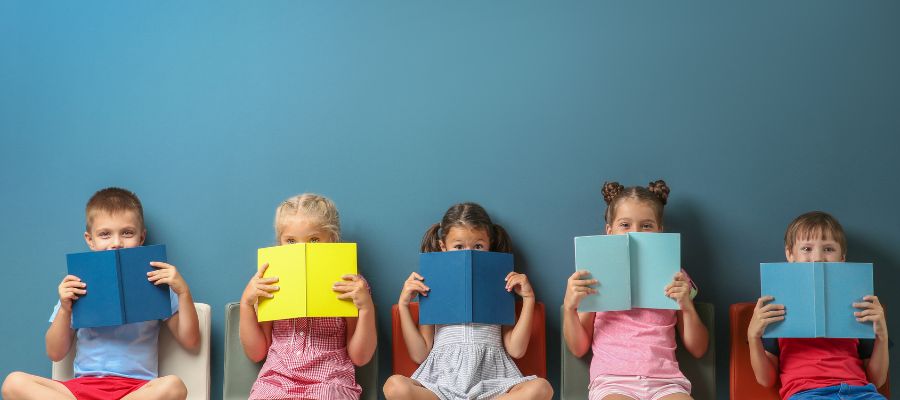
Literacy is the ability to use language and images in rich and varied forms to read, write, listen, speak, view, represent, discuss, and think critically about ideas. Literacy enables us to share information and to interact with others. Literacy is an essential tool for personal growth and active participation in a democratic society
Ontario Ministry of Education, Paying Attention to Literacy: Six Foundations for Improvement in Literacy, K-12, 2013
The Scope of Literacy In Ontario schools, all students are equipped with the literacy skills necessary to be critical and creative thinkers, effective meaning-makers and communicators, collaborative co-learners, and innovative problem-solvers. These are the skills that will enable them to achieve personal, career, and societal goals. Students develop literacy skills as they think, express, and reflect.
Critical Thinking and Critical Literacy Critical thinking is the process of thinking about ideas or situations in order to understand them fully, identify their implications, make a judgement, and/or guide decision making. It is an essential transferable skill that enables students to become independent, informed, and responsible members of society, and so is a focus of learning across all subjects and disciplines. Critical thinking includes skills such as questioning, predicting, analysing, synthesizing, examining opinions, identifying values and issues, detecting bias, and distinguishing between alternatives. Students who are taught these skills become critical thinkers who can move beyond superficial conclusions to a deeper understanding of the issues they are examining. They are able to engage in an inquiry process in which they explore complex and multifaceted issues, and questions for which there may be no clear-cut answers.
Students use critical-thinking skills when they assess, analyse, and/or evaluate the impact of something and when they form an opinion and support that opinion with a rationale. In order to think critically, students need to ask themselves effective questions in order to interpret information; detect bias in their sources; determine why a source might express a particular bias; examine the opinions, perspectives, and values of various groups and individuals; look for implied meaning; and use the information gathered to form a personal opinion or stance, or a personal plan of action with regard to making a difference
Students approach critical thinking in various ways. Some students find it helpful to discuss their thinking, asking questions and exploring ideas. Other students may take time to observe a situation or consider a text carefully before commenting; they may prefer not to ask questions or express their thoughts orally while they are thinking.
Critical literacy is the term used to refer to a particular aspect of critical thinking. Critical literacy involves looking beyond the literal meaning of a text to determine what is present and what is missing, in order to analyse and evaluate the text’s complete meaning and the author’s intent. Critical literacy is concerned with issues related to fairness, equity, and social justice. Critically literate students adopt a critical stance, asking what view of the world the text advances and whether they find this view acceptable, who benefits from the text, and how the reader is influenced.
Critically literate students understand that meaning is not found in texts in isolation. People make sense of a text, or determine what a text means, in a variety of ways. Students therefore need to take into account: points of view (e.g., those of people from various cultures); context (e.g., the beliefs and practices of the time and place in which a text was created and those in which it is being read or viewed); the background of the person who is interacting with the text (e.g., upbringing, friends, communities, education, experiences); intertextuality (e.g., information that a reader or viewer brings to a text from other texts experienced previously); gaps in the text (e.g., information that is left out and that the reader or viewer must fill in); and silences in the text (e.g., the absence of the voices of certain people or groups).
Students who are critically literate are able, for example, to actively analyse media messages and determine possible motives and underlying messages. They are able to determine what biases might be contained in texts, media, and resource material and why that might be, how the content of these materials might be determined and by whom, and whose perspectives might have been left out and why. Only then are students equipped to produce their own interpretation of an issue. Opportunities should be provided for students to engage in a critical discussion of “texts”, including books and textbooks, television programs, movies, documentaries, web pages, advertising, music, gestures, oral texts, newspaper and magazine articles, letters, cultural text forms, stories, and other forms of expression. Such discussions empower students to understand the impact on members of society that was intended by the text’s creators. Language and communication are never neutral: they are used to inform, entertain, persuade, and manipulate.
The literacy skill of metacognition supports students’ ability to think critically through reflection on their own thought processes. Acquiring and using metacognitive skills has emerged as a powerful approach for promoting a focus on thinking skills in literacy and across all disciplines and for empowering students with the skills needed to monitor their own learning. As they reflect on their strengths and needs, students are encouraged to advocate for themselves to get the support they need in order to achieve their goals.
Mathematical Literacy
Mathematical literacy is an individual’s capacity to formulate, employ, and interpret mathematics in a variety of contexts. It includes reasoning mathematically and using mathematical concepts, procedures, facts, and tools to describe, explain, and predict phenomena. It assists individuals to recognize the role that mathematics plays in the world and to make the well-founded judgments and decisions needed by constructive, engaged, and reflective citizens
Council of Ministers of Education, Canada (CMEC), Measuring Up: Canadian Results of the OECD PISA Study, 2016, p. 10
